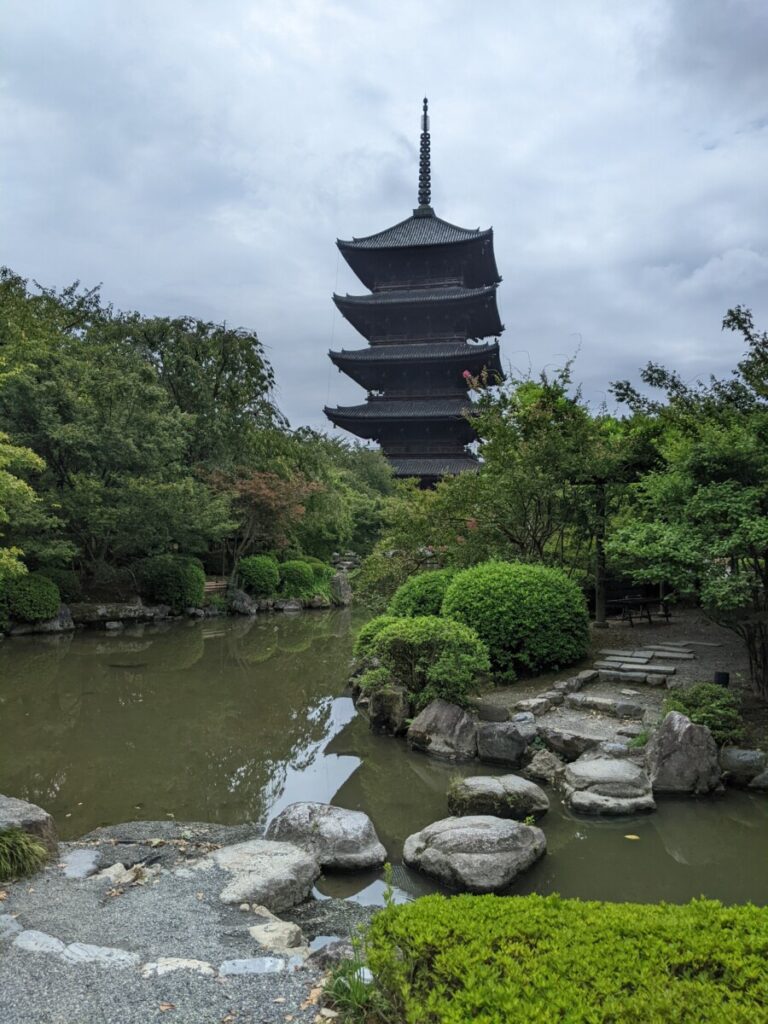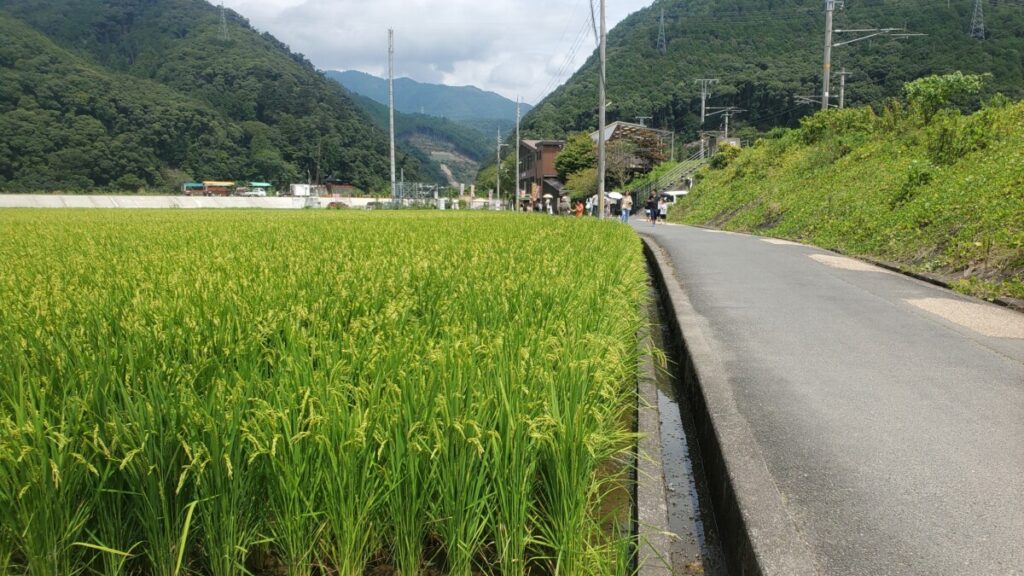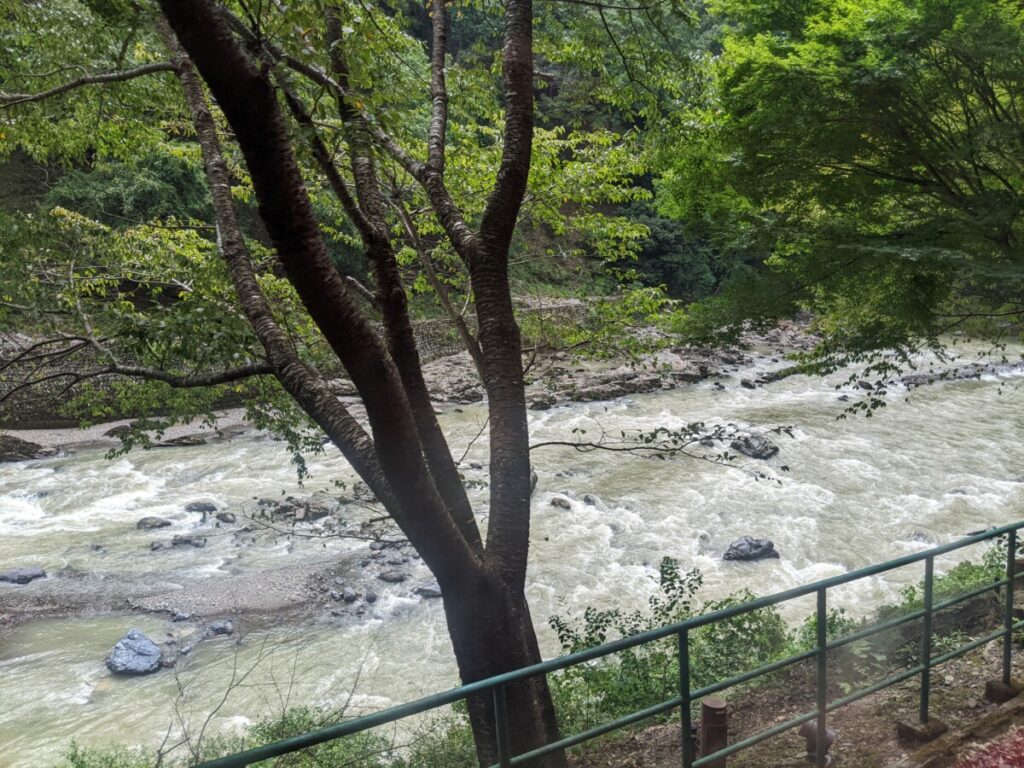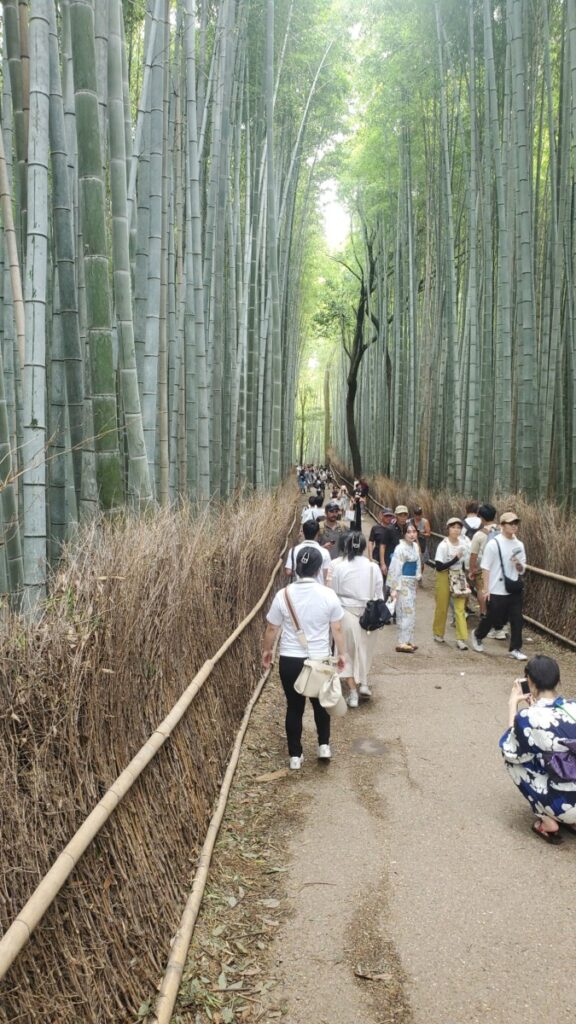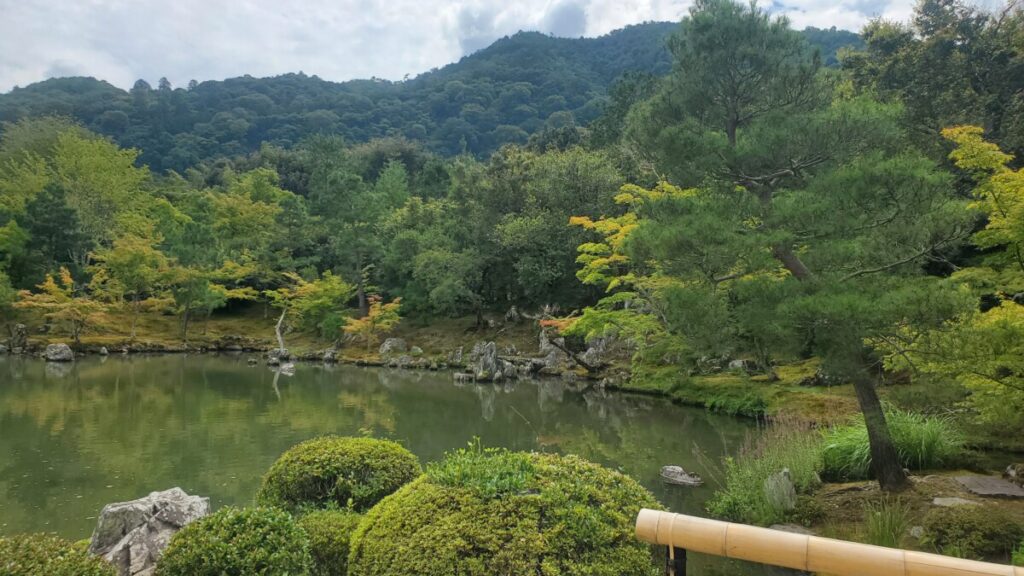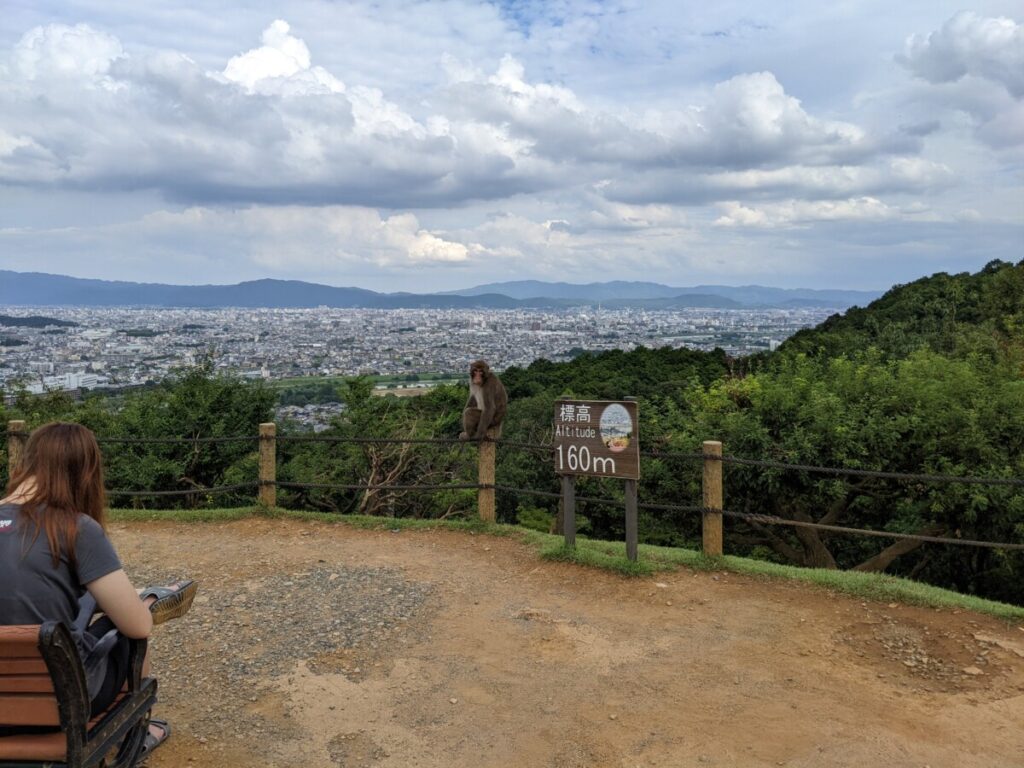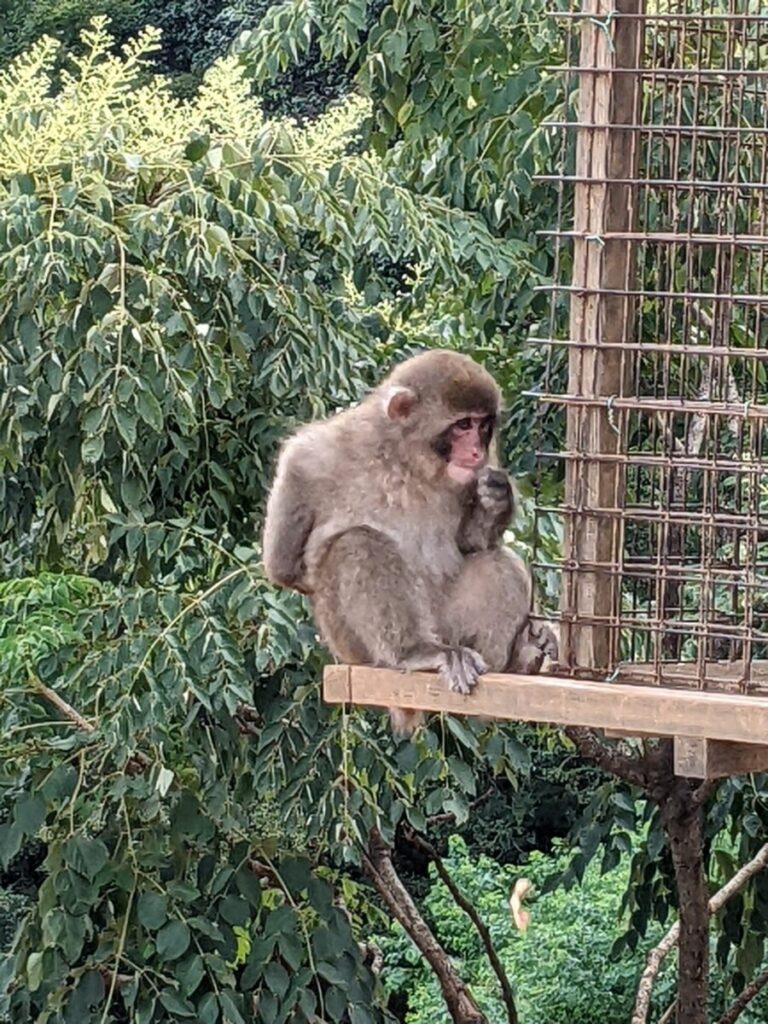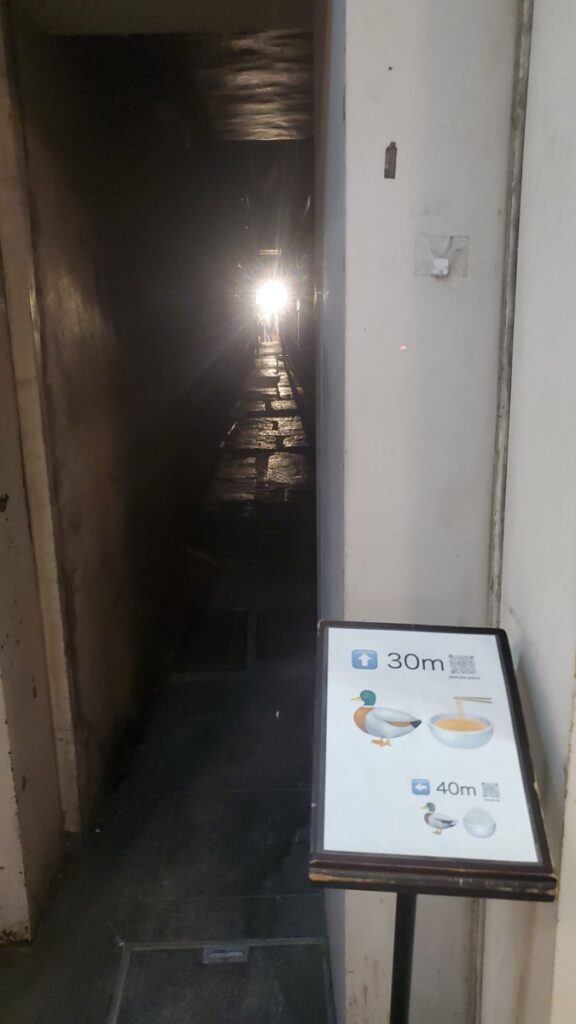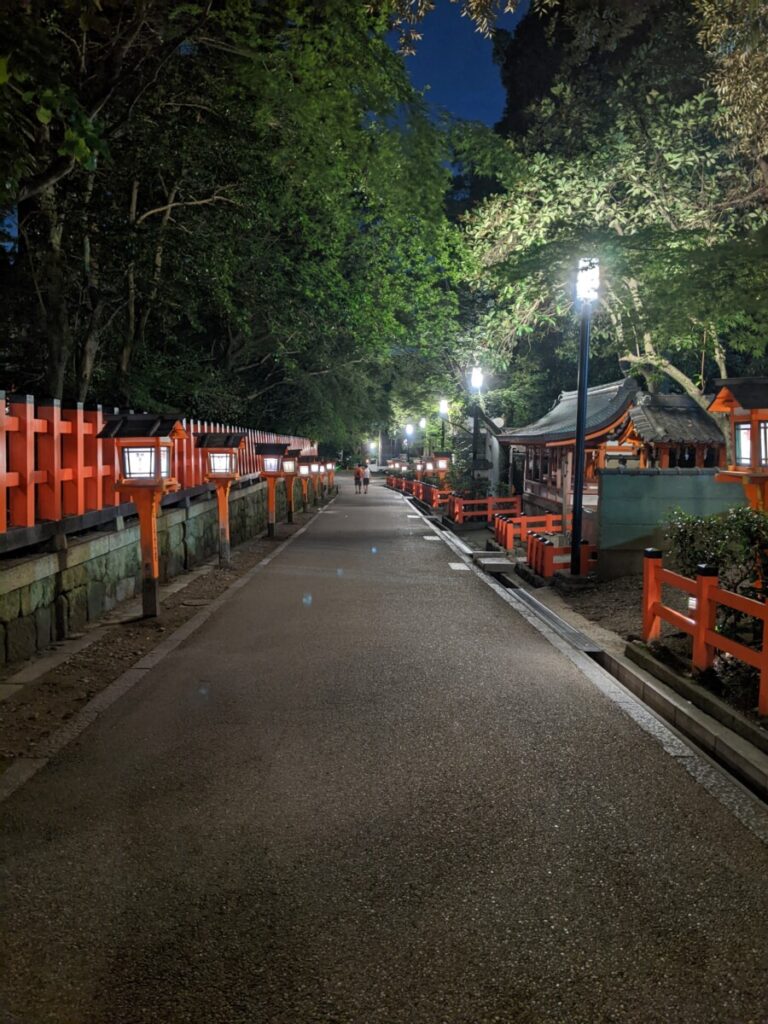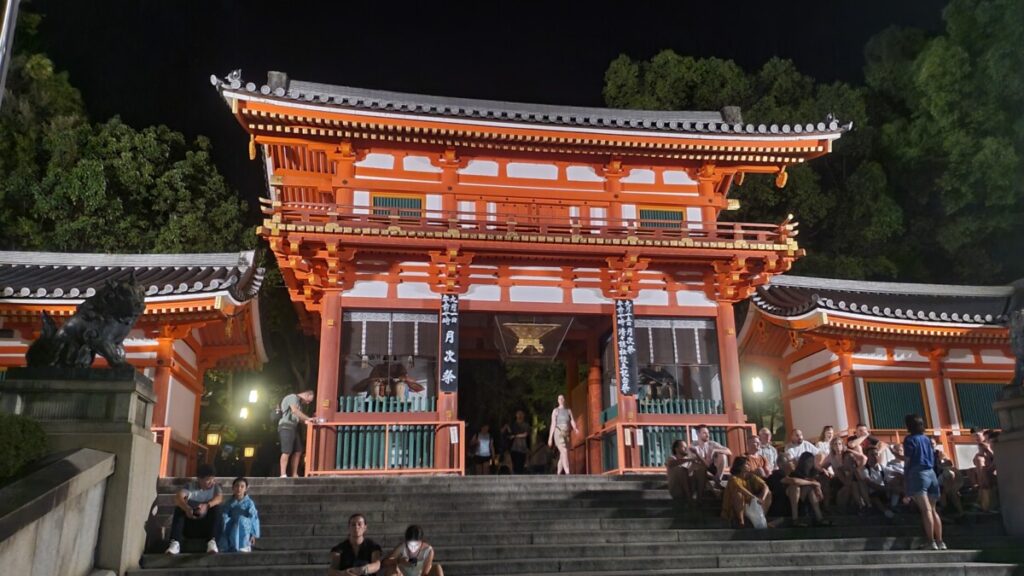Kyoto was the first time in Japan we really had time to sit down for a nice breakfast – Osaka was closed due to a typhoon, and we had trains to catch the next two mornings. We had heard a lot about fluffy Japanese pancakes, so we set out to acquire some.
However, it turns out fluffy Japanese pancakes are not breakfast food. Nowhere that sells them (and there are lots of places) does so before 11 AM at the earliest. So French toast it was. And it was fine. But we swore there WOULD be pancakes before the trip was over!
Swearing accomplished, we had a few hours to wander around Kyoto before we needed to make our reservation on the world’s least romantic Romantic Train. (More on that later.) We decided to visit a nearby Buddhist temple, but we had to stop and take pictures of a set of shrines we passed on the way. (A quick word on terminology – temples are Buddhist. Shrines are Shinto. But it’s not always easy for knucklehead tourists such as ourselves to determine which is which.)
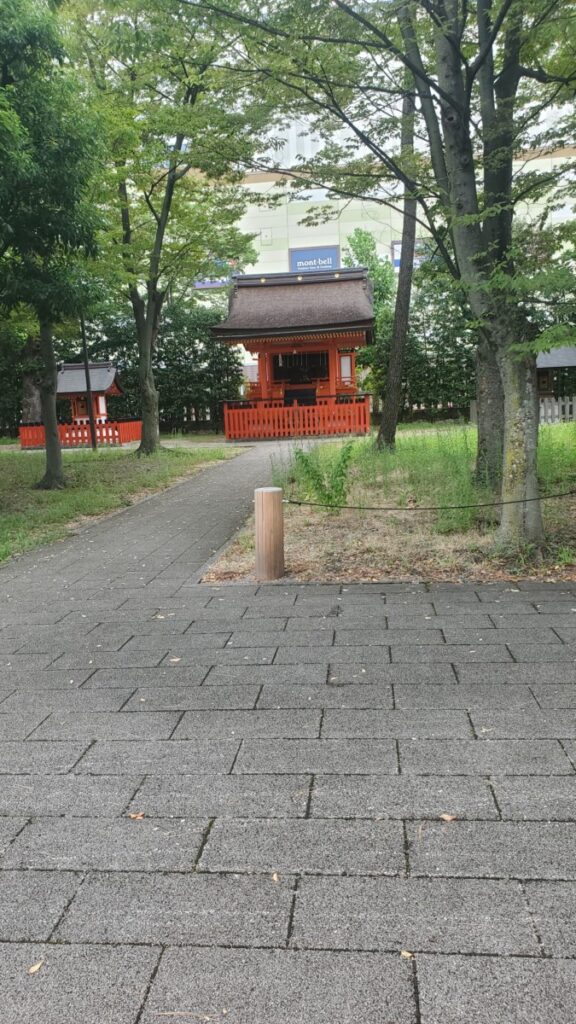
This was early days yet, so we didn’t realize just how ubiquitous these shrines were going to be. You pass small ones on nearly every street, particularly in Kyoto, which was largely undamaged in WWII. Some estimates place the number of Shinto shrines in Japan at over 100,000, and the number of Buddhist temples at around 80,000. It’s truly impressive.
“Impressive” is also the word I would use to describe our actual destination, the Tō-ji temple complex.
The complex as a whole dates from 796. As would turn out to be a common theme throughout the trip, due to fires, earthquakes, and conflict, the actual BUILDINGS at many religious sites were significantly newer than the site itself. This pagoda, for example, was originally built in the 9th century, but was destroyed and rebuilt four times, so the current structure is ONLY about 380 years old.
There are two large temple halls, neither of which allow pictures inside. Both are amazing to enter, however. The rooms are huge, dark, smell of incense, and contain statues of Buddhas ranging from the merely very large, to the truly enormous, all of them hundreds of years old. Even without pictures, it was an incredibly memorable place to stand.
Which, I am aware, does NOT help you, the reader, visualize things.
After that, we needed to walk to the train station to catch the train to the other train we had tickets on, and Google directed us down a quiet back street of Kyoto to cut through a park to our destination.
At least, it was quiet at first. Soon we heard… drumming? Well, ONE drum, anyway. And… kids? We turned a corner and saw something we definitely wouldn’t expect in North America; there was a class of about 30 children probably around 5 years old, wearing matching uniforms, with several adults supervising. One of these adults had a marching bass drum on a stand and was hitting it. Every time he did so he’d shout an instruction and the kids would, in unison, perform a gymnastic move with their partner.
I used to teach five year olds – I was lucky if I could get 30 of them to not MURDER each other, let alone perform synchronized gymnastics to a beat. We didn’t take any pictures, because that would have been creepy, but my goodness I wanted to.
However, we had to get moving, because we had to get to the starting point for our trip on the world’s least romantic Romantic Train.
I should explain.
In the northwest suburbs of Kyoto, there’s a mountain gorge with a scenic railroad running through it. This train is known as the “Sagano Romantic Railroad.” In theory, you can have a lovely romantic time on a train going through beautiful natural scenery.
And to be fair, the scenery IS very nice. Here’s the station where we boarded:
And here’s a view from the window:
Lovely, innit? Now let me paint a picture of what it’s actually like to BE on this train.
The train is PACKED. Every seat is taken with tourists, families, children, none of whom are observing the usual rules of silence on Japanese trains. In addition to the passengers, the train itself is EXTREMELY noisy. There are a pair of photographers roaming the aisles insisting on taking photos of everyone, and requiring a crowbar to convince that you do not actually wish to PURCHASE a souvenir photograph. Over all of this chaos, there is an announcer on the PA speaking in rapid, highly amplified Japanese. Continuously. For the entire (20 minute) length of the trip. At no point does disembodied announcer person ever appear to take a breath.
It was utter madness. It was not in ANY WAY romantic.
It was bonkers, I’m so glad we went.
Upon disembarking, we got to experience the peaceful stillness of the Arashiyama bamboo grove… with several hundred of our closest friends.
It’s amazing, you should go see it, but if you want to get that perfect Instagram photo without running into several million people ALSO trying to get that perfect Instagram photo, you’ll need to get there very early. Fortunately for us, we don’t even know how to SPELL Instagram. I think there’s a “w” in there somewhere?
The grove leads to another temple complex, this one quite different from the one in the city, by virtue of its more rural setting.
At this point, we were hot and tired and in need of lunch. So we walked through the (extremely touristy) town of Arashiyama to a restaurant which promised… pancakes! They were very good, but not the super fluffy ones we had been hoping for. Our quest continued…
But there was no time to waste on longing for pancakes, because we had monkeys to see! There’s a monkey park in Arashiyama! Where you can hang out with monkeys! It’s just the other side of this bridge! (Built in the medieval period, current iteration dates from 1934. See what we mean?)

It’s just the other side of this bridge… and a twenty minute walk up a steep hill. In 95 degree weather. Oof.
At least we weren’t like some of the tourists trying to do it in rented kimonos and sandals.
Once we got to the top and caught our breath, the monkeys WERE everything we hoped for, and the view was spectacular too.
You can buy apples to feed to the monkeys. In order to do that, you have to go in a cage, so they can make fun of you while you give them food.
Monkeys are neat. However, at that point, we had to haul ourselves back DOWN the mountain, catch the train back into Kyoto, and go find dinner.
We did this using a Japanese restaurant review site called “Tabelog.” The great thing about Tabelog is that there’s no grade inflation. If a restaurant has more than 3.0 rating, it’s good. If it has more than 3.5, it’s excellent, and if it’s over 4.0, you are NEVER getting a table, loser. The only problem is that it’s more or less entirely in Japanese. Thank goodness for Google Translate. (A frequent refrain on this trip.)
We decided to go to a place with a rating of 3.68. Down this alley.
What could possibly happen? Well, this, primarily.
Absurdly good. Tabelog is amazing.
We also selected this restaurant because it’s a block or so from Yasaka-Jinja, a shrine which is unquestionably best visited at night. Why?
That’s why.
This had been a LONG day, so we had a nice walk down to the bus stop and headed back to our hotel. Not much to see along the walk, really.
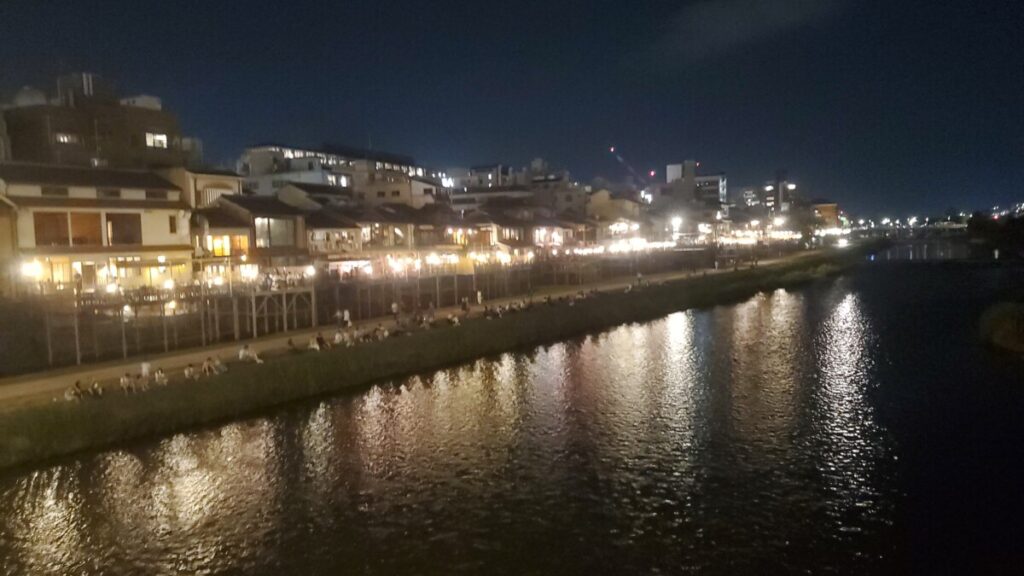
Well, OK, except that. Kyoto is really pretty.

